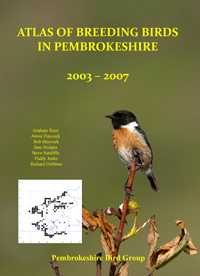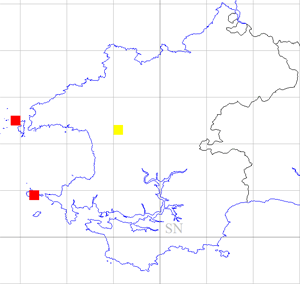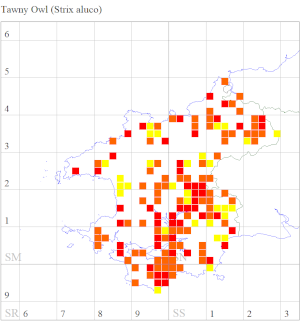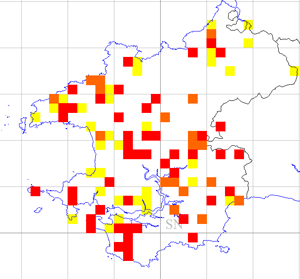Swift - 2003-07
 Thursday, May 10, 2012 at 8:51PM
Thursday, May 10, 2012 at 8:51PM Swifts nest in cavities in buildings and in Pembrokeshire in the cliffs of the south coast.
Those nesting in cliffs apart, Swifts in Pembrokeshire are entirely reliant on buildings for nest sites. The amount of renovation that has taken place since the 1980’s has made an increasing number of buildings no longer accessible to Swifts and new constructions have also proved to be unsuitable. It could reasonably be expected, therefore, that the breeding population has decreased over the past 20 years. Comparing the confirmed and probable breeding registrations combined, indicates a 48% decrease between 1984-88 and 2003-07. This is consistent with the BBS index showing a 47% decrease in Wales as a whole between 1994 and 2007. The possible breeding category was ignored when interpreting the results of both local surveys,
Swifts being such mobile birds when feeding, they can be seen almost anywhere without this providing any clue to their nest site. Although no good method of assessing population has been evolved on a county scale, an estimate was made at the end of the 1984-88 survey by noting how many were entering buildings at some reasonably well-watched colonies and using this as guidance. The result was a rough estimate of about 2,000 pairs. Applying the distribution decrease to this figure suggests there may have been less than 1,000 pairs by the end of 2007. However this assessment makes no allowance for any decrease occurring within the surviving distribution, something which has not been quantified. It could well be that the number breeding in Pembrokeshire has dipped below 1,000 pairs.
Graham Rees

Fieldwork 2003-07 (based on 490 tetrads)
Red = breeding confirmed = 39
Orange = breeding probable = 13
Yellow = breeding possible = not included
Total tetrads in which registered = 52 (10.6%)
 GHR,
GHR,  PBBA 2003-7 in
PBBA 2003-7 in  Swift
Swift 










